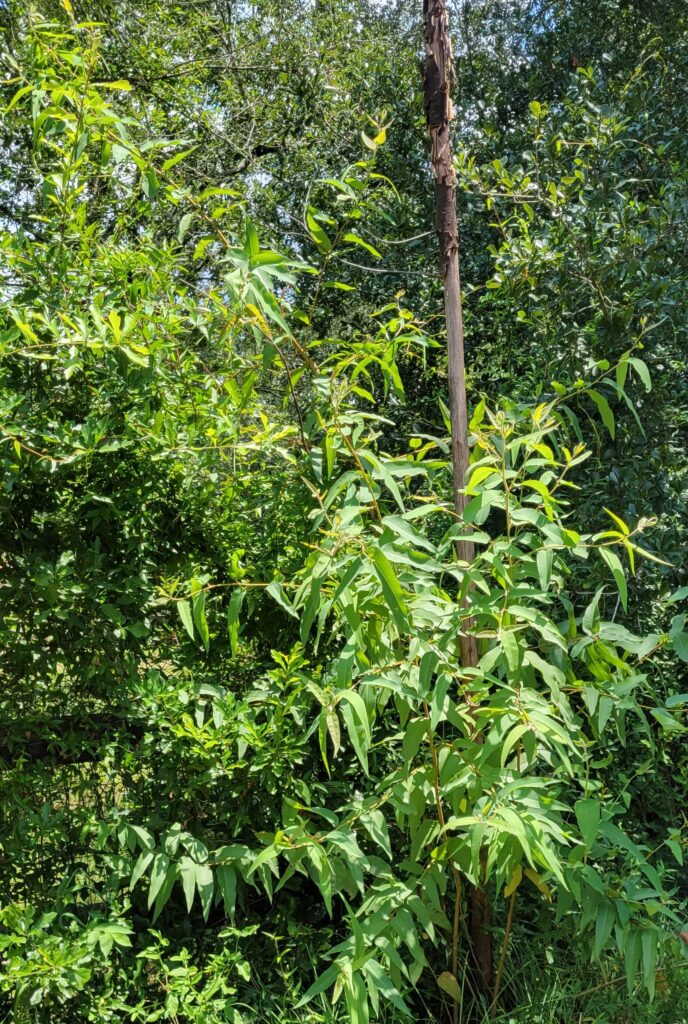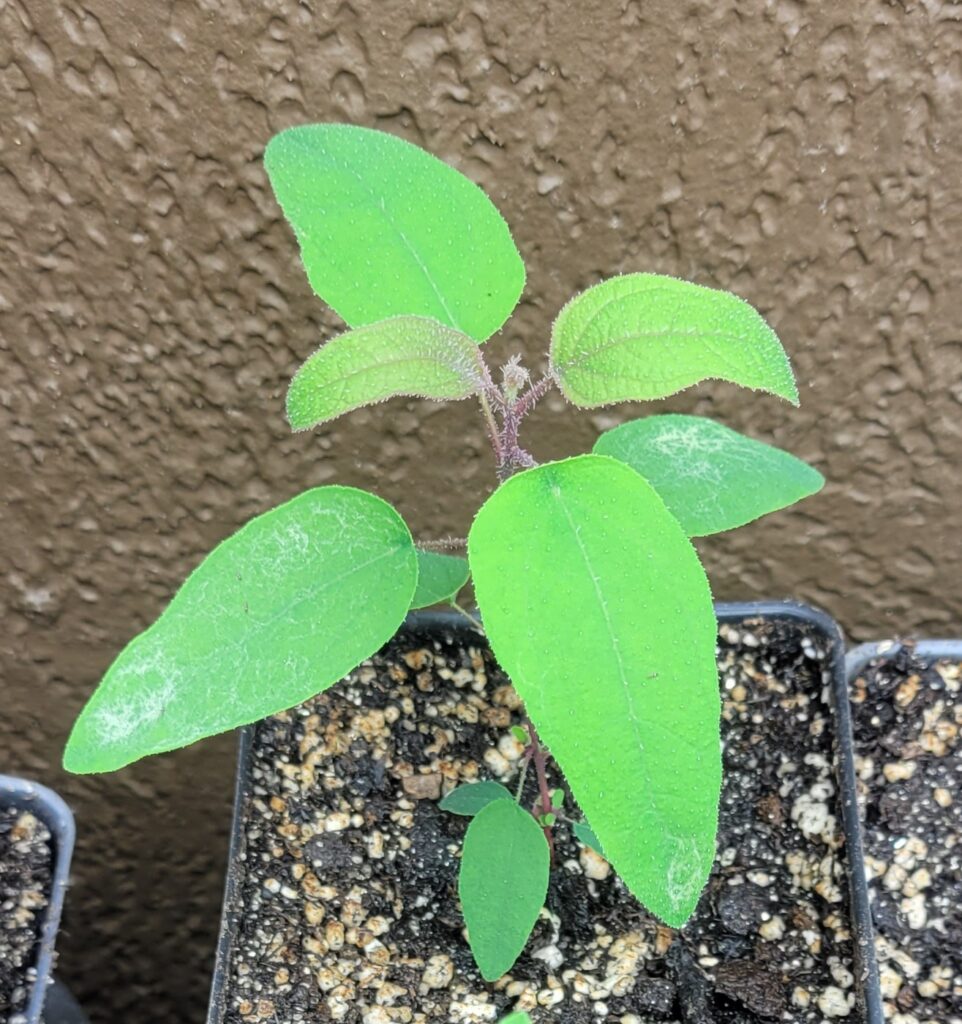The Lemon Balm Eucalyptus has spent nearly 3 years in the HDG 2 Acre Test Garden, and I have nothing but positive things to say about it. Mostly, I’m impressed with it’s ability to survive in zone 8b/9a compared to other Eucalyptus I’ve tried, and in addition, compared to a similar smelling plant, it appears to be superior.
First, much like the similarly named Lemon Balm plant, this tree produces the same bug repellent scented oils from it’s leaves. If you are interested in making homemade bug repellent, this may be an interesting alternative.
Second, my experience with a lemon balm plant was short lived and not successfully perennial; however, the Lemon Balm Eucalyptus tree has been deciduous in this zone (not perennial) for 3 years in NW Houston with no protection from wind and in less than ideal site conditions including poor soil, competition from other fence line plants, and zero watering or care since establishing.
Third, only after the 2021 February freeze did the 20 FOOT TALL (possibly taller) tree trunk die, and soon after the ground thawed it came back from the immediate trunk roots. In 5 months after beginning to re-grow, the tree has produced several new sprawling arms from the ground from 6′-10′ tall. The neighboring Carolina Jessamine vine has already attached itself to the largest branch and pulled it sideways. As my approach is pretty hands off, I do not have plans to save that branch from the Jessamine. Instead, I’m curious to see if it will produce a narly trunk in the future.

Lastly, after the freeze, I assumed my tree would not return, so I purchased seeds. Quart sized plants are available at nurseries for about $5-7, but I decided I wanted a long row of these trees since I had been pleased with my one tree so far. To my amazement, the germination rate and survival rate was off the charts. Not only did all seeds germinate, but I actually forgot about them for quite some time during a busy work week, killed half of them, and then de-tangled roots and transplanted 20 or so survivors. I won’t lie, I forgot about them about 10 more times after that, but it did appear the truly strong survived. Due to some of my neglect, the seedlings did not grow as fast as the in ground tree, but at this point in the photographed plant’s life (below), no fertilizer or compost or any organic addition has been applied which, in my opinion, beneficial microbial activity is an important component in healthy plant life.
Just a side note: Natural microbial activity in soils is very important for plant health. Once my plants are outdoors, I always apply native soil along with any other soil additives, compost, or other fertilizer. If I do not use enough native soil, I may apply liquid humate or something to increase beneficial microbial activity in the soil.

Keep up with the latest design trends in Houston, Texas and what’s going on in the HDG test garden for landscape ornamental plants, fruiting plants, vegetable & herb garden, Texas natives, and cut flowers! Follow us on Facebook, Instagram, & Houzz! @HDGLandscapeDesign
